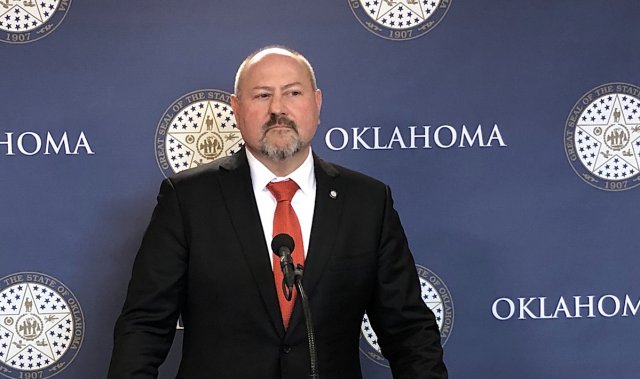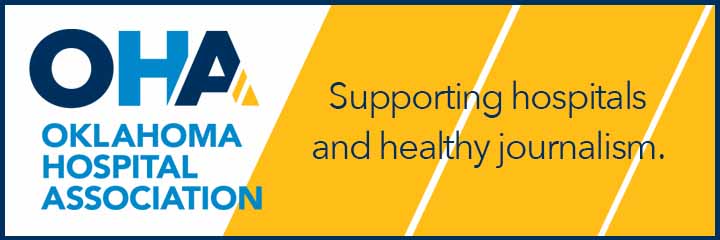

(Update: On the afternoon of Friday, April 3, Gov. Kevin Stitt revealed that the revenue failure discussed in the story below is expected to be $416 million, or nearly twice the $219 million number discussed March 31.)
The gurgling global oil market plus other economic slowdowns attributable to the COVID-19 pandemic will result in a roughly $219 million revenue failure for Oklahoma’s current fiscal year and an estimated $450 million revenue shortfall for next year’s state budget, according to legislative appropriation leaders.
The good news for Oklahoma, however, is that state leaders saved an additional $200 million last year, have a flush Rainy Day Fund available, are expecting an increase in Medicaid matching dollars and will see about $1.5 billion enter the state from a federal stimulus bill signed into law last week.
Still, the fiscal picture for Oklahoma’s government will require a series of paint jobs to stay rosy for the next year. That process is expected to start the morning of Tuesday, April 7, with an anticipated meeting of the Board of Equalization, the congregation of state executives that certifies financial estimates.
If a $219 million revenue failure for Fiscal Year 2020 is certified next week as expected, the Oklahoma Legislature would likely return from its March 17 indefinite adjournment to pass the bill required to address the revenue failure with money from the Constitutional Reserve Fund, commonly called the Rainy Day Fund.
That constitutional fund contains about $806 million currently, and a declared revenue failure would allow for emergency appropriation of up to three-eights of its balance, which would total about $300 million. Lawmakers would likely only appropriate money equal to the expected $219 million revenue failure, and the Oklahoma House could use its temporary proxy-voting rules to let some members cast votes from home. Two lawmakers and three legislative staff members have tested positive for COVID-19 already.
“We’ll leave it up to House and Senate leadership to figure out exactly how we are going to maneuver on casting votes,” House Appropriations and Budget Chairman Kevin Wallace said today. “I’m hearing we will probably be in next week. That’s not guaranteed, but I think that will probably be the case.”
Wallace (R-Wellston) said Oklahoma’s financial situation is far better than it otherwise could have been owing to the reasons outlined above.
“I will say, number one, don’t panic. This too will pass,” Wallace said. “We’ll weather the storm. It’s going to definitely take some creativity and thinking outside of the box.”
Wallace said lawyers and fiscal staff with the House, Senate and governor’s office are all pouring through the $2 trillion federal stimulus package to see how the roughly $1.5 billion expected for Oklahoma will arrive and can be used.
“What’s coming directly to the state is $844 million,” Wallace said, noting that Oklahoma City, Tulsa and tribal nations are expected to receive their own pots of money for responding to the COVID-19 crisis.
Legislature seeks to ensure ‘education is not taking a cut’

While state leaders will be moving to address the revenue failure for this fiscal year — which ends June 30 — they will also audible as they break the huddle for the Fiscal Year 2021 budget. The Legislature is constitutionally required to pass a balanced budget by May 29, but pending construction in the House and Senate chambers is also applying pressure for a mid-May sine die adjournment.
Senate Appropriations and Budget Chairman Roger Thompson (R-Okemah) said today that lawmakers are anticipating a roughly $450 million shortfall for next fiscal year, an event that would trigger availability of another three-eights of the Rainy Day Fund. Thompson said the calculation would still be based off of the $806 million figure before the fund is tapped for this fiscal year, meaning lawmakers could use up to $300 million for next year’s budget, depending on timing.
Considering the federal stimulus and other sources, Thompson joined Wallace in saying the Legislature should try to avoid cuts.
“Now is not a time to be cutting budgets or cutting services,” Thompson said. “We need to make sure that all the needs are met not only for the current crisis we are in, but also that we stabilize the budget going forward for the next fiscal year.”
Wallace offered the House’s perspective on next year’s budget goal.
“Stable budget. Flat. Some agencies have requested less appropriation from FY 2021 than 2020, so that’s positive,” he said, noting that safeguards in the Federal Medical Assistance Percentage (FMAP) should bring Oklahoma about $180 million total between the final quarter of FY 2020 and the first quarter of FY 2021.
Wallace and Thompson both said the decision by Gov. Kevin Stitt and the Legislature to save an additional $200 million last year beyond the Rainy Day Fund cap has proven prescient this year, especially when it comes to protecting the past two years’ investments in education funding.
RELATED
COVID-19: Drop in sales tax revenue to hurt cities, towns by Matt Patterson
“By having the savings, it empowers us to keep the 1017 fund whole so that education is not taking a cut, and it enables us to make sure all health agencies are fully funded,” Thompson said.
Still, with crude oil prices hovering around $20 per barrel, the impact to Oklahoma’s economy is not limited to the state budget. Counties are facing potential losses in oil and gas ad valorem dollars, municipalities are losing sales tax revenue during COVID-19 shutdown orders, and the Oklahoma Tax Commission has pushed back filing dates from April 15 to July.
“That’s taking money away from the FY 2020 budget and putting it into FY 2021,” Wallace said of the tax deadline change.
Throughout March, Stitt has been emphasizing the wisdom of last year’s additional savings.
“We’re all tied together as one community. That’s why it was so important last year for us to save $200 million when we had a budget surplus,” Stitt said in a video message March 9 after the global oil market plummeted. “I’m proud to let you know that our state has over $1 billion in savings. It’s the largest savings account in state history, and it’s because of times like this when we are going to need it.”
Shortly after the publication of this story, Stitt’s chief of communications, Charlie Hannema, sent a statement noting that state leaders have been preparing for the revenue failure.
“This projected revenue failure is not unexpected given the dramatic downturn in the oil and gas markets as well as the significant effects of the COVID-19 pandemic,” Hannema said. “The current environment reinforces the wisdom of saving an additional $200 million during a budget surplus last year, and Gov. Stitt is committed to working with the legislature to remain fiscally prudent while protecting the core services Oklahomans depend on.”
(Update: This story was updated at 3:30 p.m. Tuesday, March 31, to include comment from Hannema.)





















